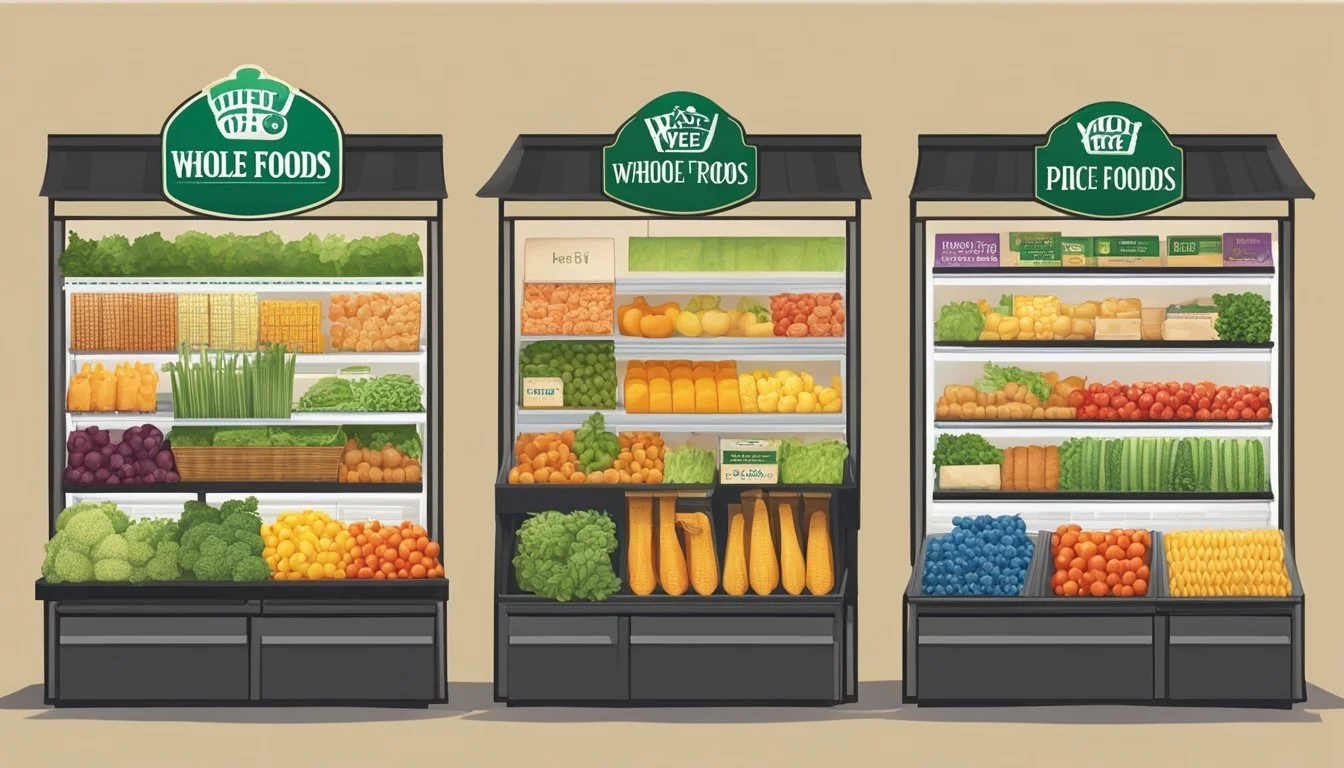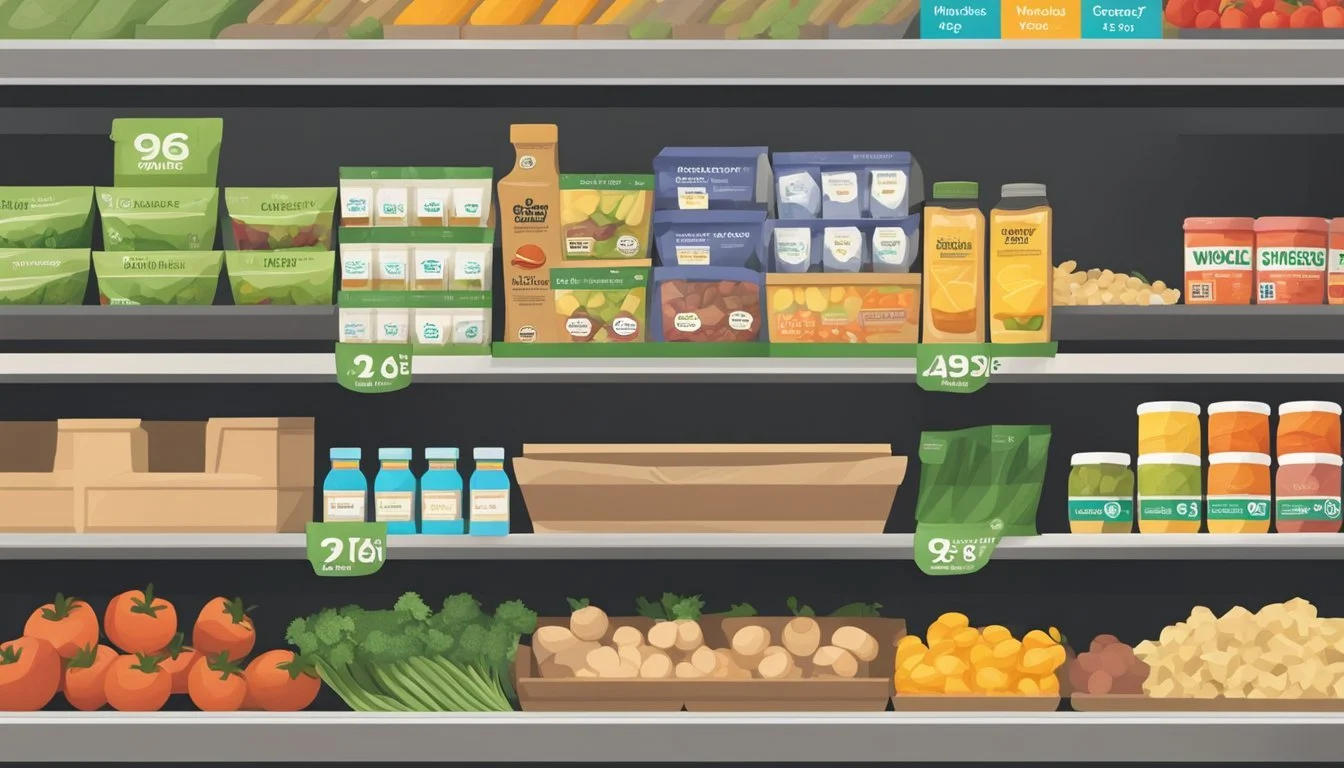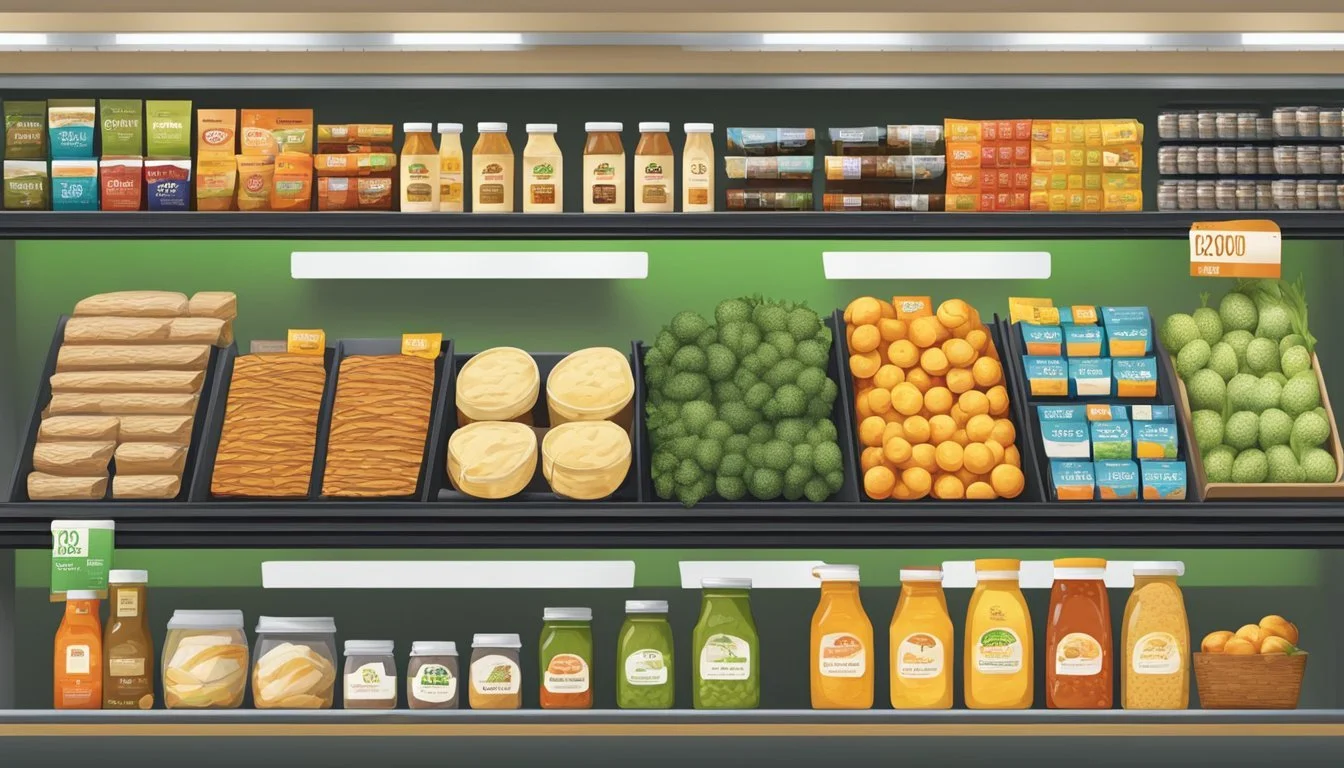Is Whole Foods Cheaper Than Hy-Vee?
Comparing Grocery Pricing Strategies
Part of Our Grocery Store Guide with Details on Whole Foods Market Prices and Hy-Vee Prices
When considering the cost of groceries, Whole Foods and Hy-Vee are often compared as leading supermarket chains in the United States. Whole Foods has built a reputation for its high-quality produce, meats, and variety of organic and prepared foods. While traditionally perceived as a pricier grocery store option, Whole Foods has taken steps to offer more competitive pricing, especially in its 365 brand that promises value alongside quality.
Hy-Vee, another prominent player in the supermarket arena, is acclaimed for its customer service and product range, often earning high ratings for customer satisfaction. While Whole Foods places an emphasis on organic and high-quality offerings, Hy-Vee distinguishes itself with a more conventional supermarket model where deals and promotions are common. This approach can be advantageous to consumers looking for lower prices without compromising selection.
Price comparisons indicate that Whole Foods can be a cost-effective choice for certain products, especially produce, where it sometimes offers prices lower than the average. In contrast, Hy-Vee often provides a more affordable overall shopping experience when taking into account the breadth of its inventory. Consumers must weigh the importance of quality, product range, and price when deciding between these two grocery chains.
Price Comparison Overview
When comparing the price points between Whole Foods and Hy-Vee, consumers often evaluate their grocery bills to determine which chain offers more savings. Whole Foods, now a part of the Amazon family, has historically been viewed as a premium grocer with higher prices, yet recent data suggests that their produce can be less expensive—by 7%—compared to Kroger, a competitor often used as a benchmark. This signals a potential shift in Whole Foods' pricing strategy, possibly influenced by Amazon's acquisition of the brand.
Hy-Vee, on the other hand, while known for quality service and a broad selection, generally appears to be slightly pricier than its grocery chain counterparts in the online space. Surveys and research have made it clear that although Hy-Vee offers competitive prices, its overall costs may not match the discounts that other stores provide.
Price-conscious customers who assess the grocery landscape find that discount chains such as Aldi and Walmart consistently offer lower prices, making them attractive options for families looking to save. Target is also mentioned for its competitive prices, with savings reported around 11%. This could make a significant difference to a family's weekly grocery expenditure, given that grocery bills are a substantial part of household budgets.
While store brands are a factor in price comparison, offering substantial discounts over name-brand products, the distinct nature of Whole Foods' and Hy-Vee's offerings may influence their pricing structures. Customers tend to weigh factors beyond mere price, like store brand quality, product selection, and shopping experience, when choosing between Whole Foods and Hy-Vee.
Quality of Produce and Meat
When evaluating Whole Foods and Hy-Vee, it is essential to consider the quality of their produce and meat offerings. Both retailers are known for their focus on providing customers with high-quality items in these categories.
Produce Quality
Whole Foods has built a reputation for supplying high-quality produce, with a strong emphasis on organic and fresh options. Customers consistently rate Whole Foods highly for the quality of fruits and vegetables offered, making them a preferred destination for those seeking superior produce. Hy-Vee competes by also offering a broad selection of fresh and qualitatively comparable produce but may have variations in pricing.
Meat Quality
Similarly, for meat quality, both Whole Foods and Hy-Vee have earned positive customer feedback. Whole Foods, in particular, adheres to rigorous quality standards, including a focus on organic and high-quality meat options. This commitment is evident in their customer ratings, which highlight the meats' freshness and quality. Hy-Vee's meat selection likewise receives praise for variety and freshness, positioning it as a strong contender in the market.
Grocery Store Brands and Offers
This section delves into the specific offerings of both Whole Foods and Hy-Vee, focusing on their store brand products and the range of promotional offers available to customers.
Store Brands
Whole Foods markets its line of products under the 365 Everyday Value brand, offering customers a selection of generic staples at a lower price point compared to national brands. Whole Foods ensures these store brands are aligned with its ethos of high-quality, often organic, and environmentally friendly products.
Hy-Vee, contrasting Whole Foods, offers an assortment of store brands that aim to provide cost-saving alternatives without compromising on quality. Their store brands include a variety of everyday items, from pantry staples to fresh produce.
Promotional Offers
Whole Foods provides exclusive discounts to Amazon Prime members, including special prices on select items and an extra 10% off on sale prices. These Prime member deals are part of Amazon's strategy to integrate benefits across its ecosystem following its acquisition of Whole Foods.
Hy-Vee frequently utilizes loss leaders—products sold at a loss to draw customers into the store where they will likely purchase more items at regular prices. In addition, Hy-Vee's weekly ads present a range of offers, from discounts on bulk purchases to sale prices on seasonal items, positioning themselves as a competitive option for budget-conscious shoppers.
Consumer Experience and Services
When evaluating Whole Foods and Hy-Vee concerning consumer experience and services, attention is primarily focused on the checkout process and the robustness of their grocery delivery options.
Checkout and Service
At Whole Foods, the checkout experience can be notably efficient with an emphasis on customer service. Employees are trained to facilitate a quick and pleasant checkout process. Hy-Vee also prioritizes customer convenience, and many stores offer self-checkout options to reduce wait times further.
Whole Foods has established a reputation for high customer service standards, often featuring well-informed staff ready to assist with product inquiries and store brand information. In comparison, Hy-Vee is recognized for emphasizing a friendly shopping environment, with dedicated staff providing assistance and promoting their store brand products within various departments.
Grocery Delivery Options
Whole Foods offers a range of grocery delivery options through partnerships with third-party services, allowing consumers to receive their purchases without leaving home. The store's integration with extensive delivery networks enables a seamless online shopping experience.
Conversely, Hy-Vee presents consumers with multiple grocery delivery and pickup options, ensuring that customers who prefer shopping from home have access to their full range of products including store brand items. Through Hy-Vee's own platforms and third-party services, they strive to provide reliable and convenient delivery services, catering to the evolving demands of consumers.
Market Research and Consumer Insights
In evaluating whether Whole Foods is cheaper than Hy-Vee, researchers have analyzed a series of price comparisons and consumer behaviors. These comparisons often measure the cost of common items typically found on grocery lists. The findings are then disseminated through various channels, including the Consumerpedia podcast, which is known for its comprehensive ratings and evaluations of stores.
Ratings tables published in consumer research studies take into account a range of factors, such as the price per unit, quality of goods, and customer satisfaction. Area consumers play a critical role in these studies. Their feedback and spending habits provide a wealth of data for analysts looking to extract meaningful patterns.
The consensus from market research is that Whole Foods, known for its selection of natural and organic products, tends to be priced higher compared to Hy-Vee. Comprehensive price metrics are used to evaluate stores, looking at a wide variety of items consistently stocked by both retailers. However, the actual cost to the consumer can depend on individual shopping patterns, such as bulk purchases and sale item utilization.
List of Factors Evaluated:
Price per unit
Product quality
Consumer satisfaction ratings
Research indicates that shoppers prioritize different aspects when selecting a supermarket. Some may choose Whole Foods for its organic selection despite higher prices, while others prefer Hy-Vee for its combination of value and quality. It's pertinent that consumers make informed decisions based on their personal needs and budget constraints.
Comprehensive Store Analysis
When comparing grocery stores Whole Foods and Hy-Vee, one must consider a range of factors including the price of essentials such as dairy, butter, and prepared foods. Families spending a typical $250 per week on groceries would notice a significant price difference when choosing between these two retailers.
Whole Foods has a loyal following particularly among those seeking healthy food options. Their pricing for produce like cauliflower and cucumbers is approximately five percent lower than the average cost. Whole Foods also offers competitive prices on organic and store-brand items, appealing to shoppers prioritizing overall quality.
Hy-Vee, predominantly located in the Twin Cities and the Chicago area, provides a substantial selection of pantry and dry goods. Their vibrant prepared foods section is a strong selling point, although, in the online grocery space, Hy-Vee’s prices might come across as slightly higher, particularly for items such as chicken breast, sugar, and cheddar cheese.
The price difference scales based on specific items, with generic products often priced competitively at Hy-Vee. However, customers looking for store brands like Trader Joe’s, Wegmans, or Aldi could observe cost savings in staples including white bread and butter.
In summary, both Whole Foods and Hy-Vee serve their respective markets—Whole Foods with an emphasis on organic and health-focused offerings and Hy-Vee catering to a broad audience with a mix of competitive prices and selection. Customers might find Whole Foods advantageous for select produce, whereas Hy-Vee could potentially offer better deals on bulk purchases and mainstream products.






